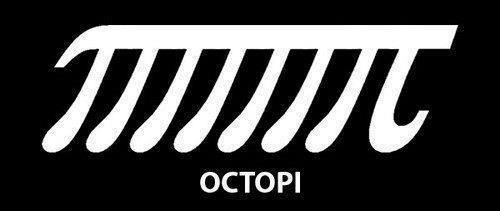 “I Prefer Pi” is appropriate title for Pi Day (3/14, i.e., March 14), as it is one of the few palindromes involving Pi = 3.141592653589793… (a palindrome is a phrase that reads the same forwards or backwards).
“I Prefer Pi” is appropriate title for Pi Day (3/14, i.e., March 14), as it is one of the few palindromes involving Pi = 3.141592653589793… (a palindrome is a phrase that reads the same forwards or backwards).
Pi Day is particularly memorable this year, since only once a century can one celebrate this event in a year where the longer version 3/14/15 continues two more correct digits of Pi. The Museum of Mathematics in New York City, among others, is taking Pi Day 2015 one step further, by celebrating at 9:26am, i.e., 3/14/15/926, adding three more digits. See MoMath’s website for details.
Chicagoans plan to celebrate by running in a Pi-K race of 3.14 miles. Numerous city bakeries are offering special pies for the occasion at $3.14 per slice.
 Not as well known perhaps is the fact that March 14 is also the 136th birthday of Albert Einstein, and that 2015 is the 100th anniversary of the publication of Einstein’s paper on general relativity. To commemorate this year’s doubly significant event, Princeton University is planning a gala event, including a pie eating contest, a performance by the Princeton Symphony, a contest to see who can recite the most correct digits of pi, and a guided Einstein tour.
Not as well known perhaps is the fact that March 14 is also the 136th birthday of Albert Einstein, and that 2015 is the 100th anniversary of the publication of Einstein’s paper on general relativity. To commemorate this year’s doubly significant event, Princeton University is planning a gala event, including a pie eating contest, a performance by the Princeton Symphony, a contest to see who can recite the most correct digits of pi, and a guided Einstein tour.
Pi in the popular culture
Pi Day long ago extended its reach beyond a handful of mathematical zealots, to become a widely celebrated event. For example, the March 14, 2007 New York Times crossword puzzle featured clues, where, in numerous locations, a pi character (standing for PI) must be entered at the intersection of two words. For example, 33 across “Vice president after Hubert” (answer: SPIRO) intersects with 34 down “Stove feature” (answer: PILOT). Indeed 28 down, with clue “March 14, to mathematicians,” was, appropriately enough, PIDAY, while PIPPIN is now a four-letter word.
In 2009, the U.S. House of Representatives passed resolution officially designating March 15 as as “National Pi Day,” and encouraging “schools and educators to observe the day with appropriate activities that teach students about Pi and engage them about the study of mathematics.” This may well be the first legislation on Pi Day to have been adopted by a national governmental body.
In general, pi is much more in the public eye than it was even five or ten years ago. On May 9, 2013, the North American quiz show Jeopardy! featured an entire category of questions on pi. The clues provided were:
- ($200) Pi is the ratio of this measurement of a circle to its diameter.
- ($400) Numerically, pi is considered this, like a type of “meditation”.
- ($600) For about $19,100 x pi, this “Black Swan” director made “Pi”, his 1998 debut film about a math whi
 z.
z. - ($800) In the 100s A.D. this Alexandrian astronomer calculated a more precise value of pi, the equivalent of 3.14166.
- ($1000) You can find the area of this oval geometric shape with pi x A x B, if A & B are half of its longest & shortest diameter.
The clues and the answers (all were answered correctly by various contestants) are given here in the J-archive, an independent repository of clues and answers maintained by Jeopardy! fans.
Some other recent examples of the public’s mania for pi include the following:
- On September 12, 2012, five aircraft armed with dot-matrix-style skywriting technology wrote 1000 digits of pi in the sky above the San Francisco Bay Area as a spectacular if costly piece of piformance art.
- On March 14, 2012 (appropriately enough), U.S. District Court Judge Michael H. Simon dismissed a copyright infringement suit relating to the lyrics of a song by ruling that “Pi is a non-copyrightable fact.”
- On August 18, 2005, Google offered 14,159,265 “new slices of rich technology” in their initial public stock offering. On January 29, 2013 they offered a pi-million dollar prize for successful hacking of the Chrome Operating System on a specific Android phone.
Current record for computing pi
Ever since the dawn of the computing age, researchers have plied their craft at computing pi, by a variety of often exotic techniques. The current record is 13.3 trillion decimal digits, which has been ascribed to someone known only as “houlouonchi” and Alexander J. Yee. See the Wikipedia article on computing pi for a complete chronology beginning with the ancient Egyptians to the present day.
What is pi good for?
So what is pi good for, anyway? Does pi or the digits of pi ever really enter the day-to-day world? It does, actually, quite a bit.
For example, pi is central to digital signal processing, which is pervasive in our modern wireless world. The digits of  pi (in binary) are probably somewhere in the programming of your smartphone, used in digitally decoding multichannel, gigahertz signals while you casually chat with your friend about the local weather and politics. Mathematically speaking, your smartphone is performing a “fast Fourier transform,” which involves pi.
pi (in binary) are probably somewhere in the programming of your smartphone, used in digitally decoding multichannel, gigahertz signals while you casually chat with your friend about the local weather and politics. Mathematically speaking, your smartphone is performing a “fast Fourier transform,” which involves pi.
Pi even appears in the field equations of Einstein’s general relativity. In the numerator of the right-hand side, one finds “8 pi G”, where G is Newton’s gravitational constant. So when you read reports about tests of Einstein’s general relativity, such as the recent dramatic discovery of a four-way gravitational lens, keep in mind that pi is behind the equations governing these mind-blowing phenomena.
Fo those interested in looking over some of the original technical papers on pi that have appeared over the past 120 years in the American Mathematical Monthly, see the Pi day anthology by one of us and Scott Chapman in the March 2015 Monthly. While many of these articles are targeted to mathematical researchers, quite a few are readable by those with relatively modest mathematical training.
For the rest of us, perhaps it is enough just to know that pi = 3.1415926535897932384626433832795028841971693993751…
[Added 14 Mar 2015:] This blog was also adapted for an article in the Conversation.
Other coverage for this year’s Pi Day includes articles in the following: New York Times #1, New York Times #2, Scientific American, Washington Post #1, Washington Post #2, Marketwatch.com, Quartz and Stephen Wolfram’s blog.